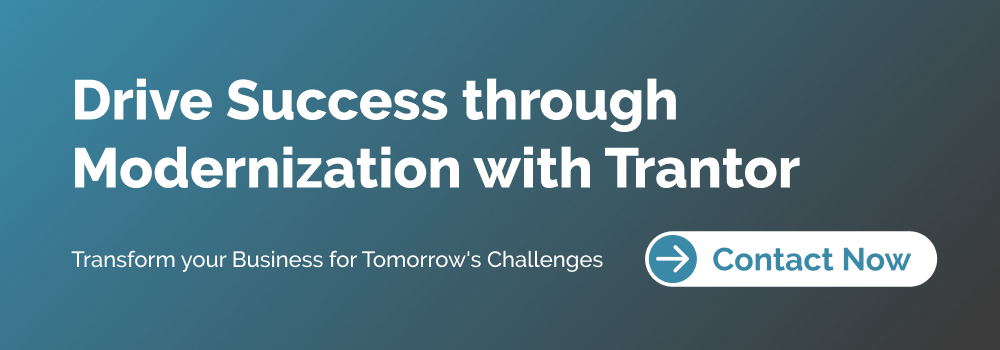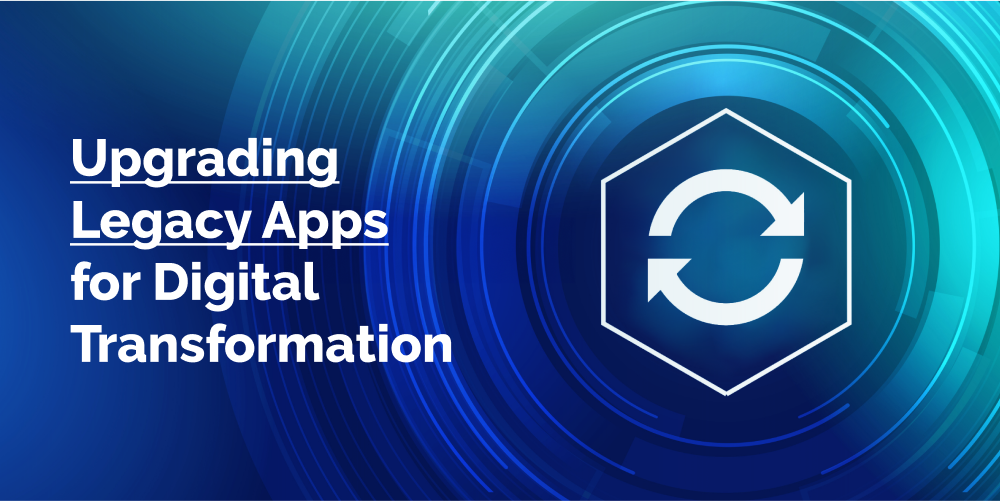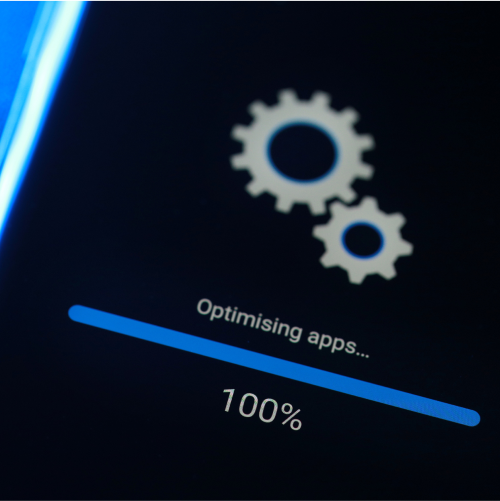Software Development, zBlog
Legacy Application Modernization: The Strategic Imperative for Digital Transformation
Team Trantor | Updated: September 29, 2023
Introduction
In today’s increasingly digital business landscape, legacy applications pose one of the biggest threats to an organization’s ability to compete and thrive. These outdated, inflexible systems, many built decades ago on monolithic architectures, struggle to meet the demands of modern customers, markets, and workforces.
According to recent research by McKinsey, over 70% of an enterprise’s IT budget goes towards simply maintaining existing legacy systems. This massive spending on “keeping the lights on” leaves little room for innovation or transformation initiatives. At the same time, aging legacy systems present security, efficiency, and compliance risks that only compound over time.
But perhaps most importantly, legacy systems constrain organizations from capitalizing on emerging technologies like cloud, mobile, Internet of Things (IoT), artificial intelligence (AI), and advanced analytics. They stifle experimentation, agility, and disruptive innovation. In a startling statistic, IDC estimates that legacy systems cost organizations $1.7 trillion each year in lost productivity and opportunity costs.
The imperative for enterprises is clear – legacy application modernization must become a strategic priority. But this journey involves complex technical and organizational challenges. In this comprehensive guide, we will cover:
- The business drivers behind legacy modernization
- Key modernization strategies and approaches
- Critical steps for planning and executing modernization initiatives
- Real-world examples and use cases of transformation success
- Emerging technologies that are powering modernization
- Best practices for aligning legacy initiatives with broader digital goals
Let’s dive in and understand what’s propelling organizations to urgently architect IT estates for the future.
The Compelling Drivers for Legacy Application Modernization
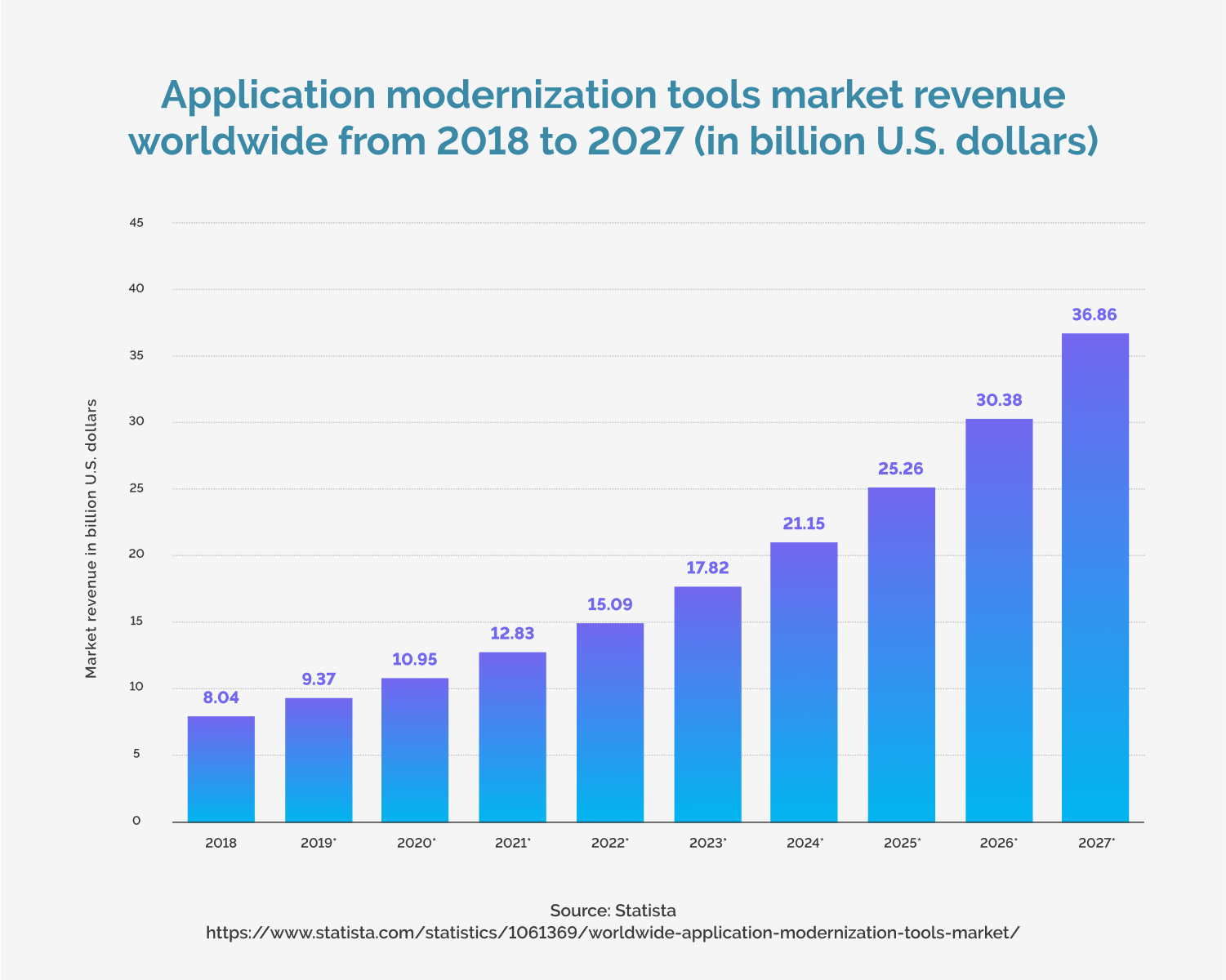
In 2018, the worldwide market for legacy application modernization tools had a valuation of $8.04 billion USD. Anticipated growth in the near future is poised to propel this market substantially, with an estimated value of $36.86 billion USD projected by 2027. The increasing imperative for digital transformation is a key driver behind the heightened demand for these tools.
McKinsey’s global surveys reveal that 75% of executives say their legacy systems present barriers to growth and innovation. But what specifically makes modernizing legacy platforms an urgent mission? Several key factors drive the growing imperative:
- Innovation Velocity
In a competitive landscape, the speed of innovation dictates success. However monolithic legacy systems with entangled business logic cannot match the rapid release cycles of modern platforms built on microservices and APIs. Their complexity hinders the development velocity required to capitalize on emerging technologies and experiences. - Customer Expectations
Today’s consumers expect responsive, personalized, and context-aware experiences across channels and touchpoints. However, legacy customer interfaces lack the agility to deliver these seamless omni-channel engagements. - Data Opacity
Siloed legacy systems make it tremendously difficult to extract actionable enterprise-wide data insights. Lack of data transparency severely limits fact-based decision-making and predictive analytics. - Expertise Scarcity
Very few developers today possess expertise in legacy languages like COBOL. As legacy skills disappear from the workforce, maintenance costs and risks grow exponentially. - Agility & Scale
Inflexible legacy architectures cannot take advantage of flexible cloud infrastructure and on-demand scaling. This results in higher capital costs and the inability to adapt rapidly to changing demands. - Total Cost of Ownership
The maintenance costs, opportunity costs, and risks associated with legacy systems result in staggering TCO for enterprises. IDC pegs the global cost of legacy tech debt at a whopping $5 trillion! - Security & Compliance
With growing data regulations and cyber threats, aging legacy systems with perimeter defenses pose massive security and compliance risks that can lead to fines, lawsuits, and customer distrust.
Given these stark realities, forward-looking organizations recognize that comprehensive modernization is essential to competing as a digital business. Incremental fixes or point tactical solutions are insufficient – enterprises need holistic strategies to architect future-ready application landscapes.
Approaches to Application Modernization
Enterprise application estates often encompass hundreds of complex, mission-critical legacy systems built up over decades. Tactically replacing each one is neither practical nor aligned with business goals. Instead, CIOs and IT leaders should take a strategic, portfolio-based approach to legacy application modernization.

Based on factors like business impact, lifecycle stage, and architectural constraints, each legacy app can be assigned to one of five modernization strategies:
- Rehosting
Also known as “lift and shift”, this fast and non-invasive approach simply migrates the application to a new infrastructure environment like the cloud without modification. This provides an immediate total cost of ownership benefit but does not unlock agility or innovation advantages. - Replatforming
Replatforming encapsulates legacy codebases into modern component architectures like microservices, enabling scalability and faster release cycles. The core of the application is preserved but decoupled from aging platforms. - Refactoring
With refactoring, legacy code is restructured to be more maintainable without changing functionality. The goal is to simplify architectures to enable agility over time. Refactoring enhances resilience but is typically the most time-intensive approach. - Re-architecting
A complete redesign focused on re-imagining legacy apps using cloud-native patterns and technologies aligned to business requirements. This ambitious approach unlocks maximum agility but involves complexity in transforming legacy data structures. - Retiring
For legacy apps providing limited differentiated value, retirement may be the right path to reduce technical debt. However, data migration and business process impacts need to be evaluated.
Each approach involves tradeoffs between benefits, costs, and risks. IT leaders will need to align stakeholders and develop a portfolio strategy suitable for their specific legacy landscape and modernization goals.
6 Steps to Plan and Execute Modernization Journeys
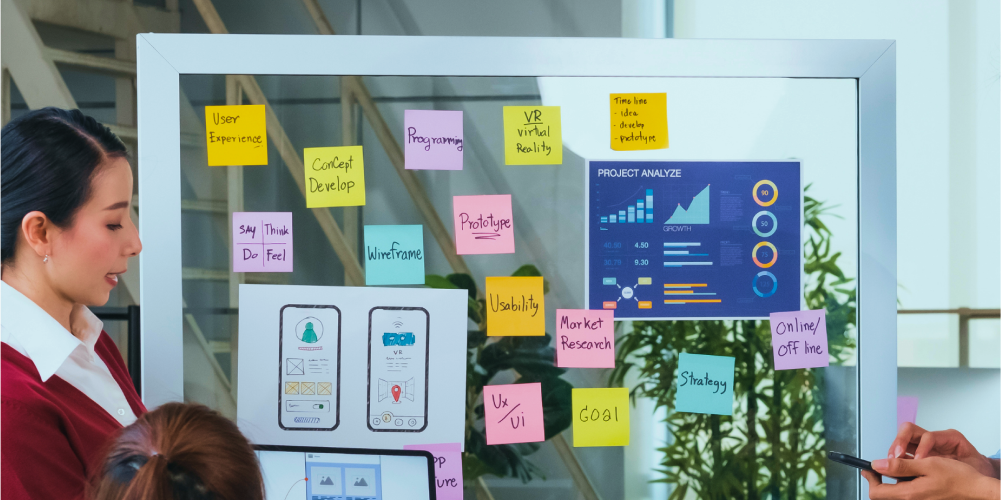
Embarking on large-scale modernization initiatives requires meticulous planning and flawless execution. Based on PWC’s analysis of successful legacy transformation programs, here are the six vital steps:
- 1. Build a Comprehensive Inventory
The first crucial step is developing a complete legacy application inventory including interfaces, data structures, platforms, business logic, and usage. This 360-degree view allows rational, fact-based modernization prioritization. - 2. Define Target Architecture Vision
What are the envisioned end-state attributes of the transformed application landscape? Will it be cloud-native, API-driven, or serverless? Defining architectural principles and reference models grounds the initiative and decision-making. - 3. Analyze and Prioritize
Using an application portfolio analysis framework, profile legacy systems based on value, criticality, costs, risks, and other metrics. This analysis shapes priorities and sequencing for modernization based on business goals. - 4. Develop Execution Roadmap
Given priorities, constraints, and dependencies, map out an actionable transformation roadmap. The roadmap should outline timelines, resource needs, and quick wins balanced with strategic modernization efforts. - 5. Implement Governance Model
Establish business outcome-focused governance across stakeholders to drive alignment and coordinated decision-making throughout the modernization journey. - 6. Manage Change
Any large-scale IT transformation requires managing both technology and organizational change. Plan the people, culture, and change management elements to support and accelerate your legacy initiatives.
Underestimating the organizational challenges and focusing solely on technical migration risks failure. Holistic planning and governance combined with agile execution are key to extracting full business value.
Now let’s explore examples of organizations unlocking this value through legacy application modernization.
Real-World Examples of Legacy Modernization Success
Legacy modernization initiatives represent multi-year transformational journeys for most organizations. But visible results delivered in early phases help maintain momentum and support. Here are four examples of impactful legacy modernization delivering compelling business outcomes:
- Global Bank – Faster Product Innovation
A multinational bank struggled with slow time-to-market for new financial products and services. Their core systems built decades ago could not rapidly deliver innovative digital experiences expected by modern customers. By re-platforming legacy systems onto cloud-native microservices, they reduced new product release cycles by over 40%. This enabled accelerated innovation to grow market share. - Regional Hospital – Improved Patient Outcomes
A regional hospital faced massive challenges in aggregating medical data across disparate legacy systems in outpatient clinics and specialized departments. By gradually modernizing these systems using APIs and cloud data lakes, they gained a unified longitudinal view of patient records. This improved clinical decision-making and patient health outcomes. - State Government – Increased Citizen Services Adoption
A state government agency operated legacy citizen service applications that provided limited online functionality—modernizing these apps and adding user-friendly interfaces increased digital service adoption by over 35%. This reduced operational costs for agencies while improving citizen access and satisfaction. - Retailer – Enhanced Omnichannel Experiences
A national retail chain struggled to deliver consistent omnichannel customer experiences due to a patchwork of legacy systems. Rationalizing these into an API-driven platform enabled real-time visibility across inventory, orders, and store systems. The result was a 20% increase in omni-channel conversion and revenue.
These examples demonstrate the power of aligning legacy modernization programs to clear business goals and outcomes. Beyond cost savings, strategic legacy initiatives can help drive differentiation, revenue growth, and competitive advantage.
Emerging Technologies Powering Modernization

Modernizing complex legacy portfolios is enabled by leveraging disruptive technologies strategically. Here are four technology catalysts:
- Cloud Native Patterns
Cloud-native technologies like containers and microservices enable breaking down monolithic legacy apps into independently scalable and manageable components. This drives agility. - Low Code Platforms
Low-code software development technologies drastically reduce the effort and skills needed to transform legacy UIs and integrate apps via APIs. They democratize legacy modernization. - Intelligent Automation
Combining robotic process automation (RPA), machine learning (ML), and AI accelerates many modernization tasks from analysis to code transformation to testing. This boosts speed and quality. - API Gateways
API gateways create abstraction layers that leave legacy backends intact while exposing data and services to modern presentation layers. This “old backend, new frontend” approach minimizes risk.
Leveraging these disruptive technologies helps accelerate legacy modernization initiatives and unblock transformation journeys.
Aligning Modernization with Digital Transformation

Beyond tactical legacy remediation, CIOs have a strategic opportunity to align modernization with broader digital transformation efforts. App modernization should not happen in isolation – it needs to be synchronized with initiatives around cloud adoption, data analytics, and platform engineering.
Some key connections between legacy programs and digital transformation include:
- Using data within legacy systems as the foundation for enterprise data lakes and advanced analytics.
- Implementing API gateways for legacy integration that also enable ecosystem connectivity and external developer leverage.
- Migrating legacy apps to the cloud alongside new SaaS adoption to maximize economies of scale.
- Using identity access management (IAM) for legacy authentication that also improves customer identity and consent across digital channels.
- Building skills, culture, and organizational structures that support continuous modernization aligned to digital objectives.
By tapping into legacy transformation to amplify digital initiatives, CIOs can accelerate the pivot to tech-driven business models.
Critical Success Factors for Modernization Programs
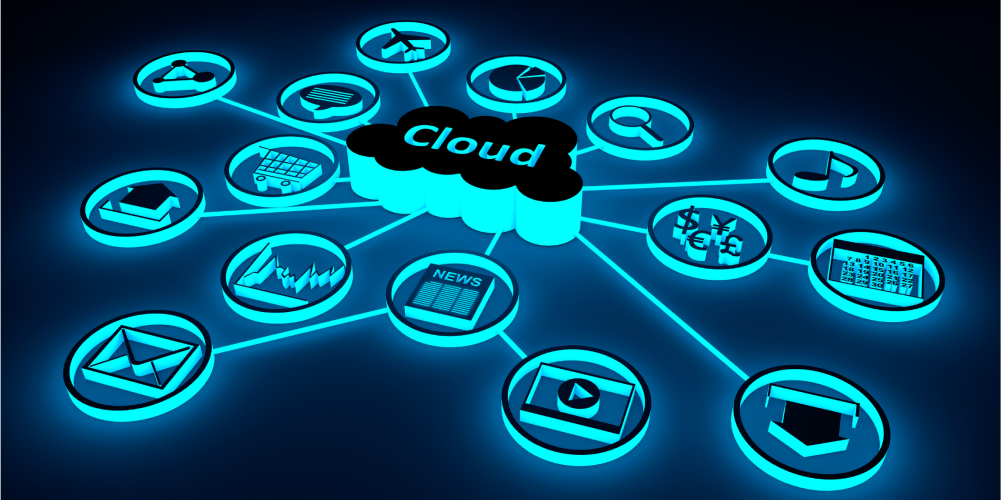
Based on analyzing patterns from modernization initiatives, Gartner outlines six vital factors that separate success from failure:
- Business-driven prioritization – The modernization sequence is based on business goals beyond just cost and risk. Quick wins establish credibility.
- Architecture-led execution – Delivery is guided by the target technical vision while also pragmatically leveraging legacy platforms.
- Agile delivery – Multi-modal agile development and integration accredited via DevSecOps enables faster outcomes.
- Automation first – Intelligent automation is extensively used to boost quality and speed across the modernization lifecycle.
- Data-first approach – Priority in making siloed legacy data accessible enterprise-wide to unlock analytics and insights.
- Cloud accelerates – Strategic use of cloud, containers, serverless, and PaaS to achieve flexibility goals.
Beyond these technology and delivery enablers, the most crucial element is support and participation from business leadership and stakeholders. Without engaged business sponsors, legacy modernization derails from priorities and desired outcomes.
By embracing these critical success factors, enterprise IT organizations can take control of legacy platforms instead of being handcuffed.
Navigating the Challenges of Application Modernization

Despite strong motivations and proven approaches, legacy modernization remains extremely challenging due to several constraints:
- Transformational Complexity
Business logic encapsulated in legacy platforms is often poorly documented and understood. Unraveling these hidden dependencies and data schemas involves significant discovery effort. - Disruption Risks
Since legacy applications are often deeply embedded in business operations, migration downtime can severely impact productivity and outcomes. This disruption risk needs to be carefully managed. - Scarce Expertise
Mainframe skills fundamental to understanding and transforming legacy platforms are difficult to obtain as platforms age. This exacerbates an already challenging skills gap. - Cultural Inertia
After decades of tolerating legacy debt to focus on new systems, shifting mindsets and culture toward modernization is difficult. Overcoming inertia requires tenacity. - Undefined Returns
Unlike new developments with defined features, returns from huge modernization investments are less tangible. This makes building rock-solid business cases challenging upfront.
Given these daunting realities, many organizations struggle to move legacy modernization beyond an aspirational goal. But with the exponential value at stake, enterprises have no choice but to overcome these hurdles. Let’s examine proven strategies for doing so.
Overcoming Modernization Barriers
To successfully navigate legacy modernization challenges, leading organizations take five key steps:
- 1. Secure executive sponsorship by exposing lost opportunity costs.
- 2. Start with niche use cases that demonstrate clear ROI based on business outcomes.
- 3. Complement internal skills with specialized system integrators who provide legacy platform expertise.
- 4. Extensively use low-code tools, automation, and cloud utilities to accelerate efforts.
- 5. Implement agile delivery with regular customer demo reviews to detect capability gaps early.
Beyond these practical steps, the cultural shift to proactive, business-driven legacy management is indispensable. IT leaders must position modernization engineering groups as internal startups directly empowering business priorities.
With this strategic mindset and intense technology enablement focus, enterprises can overcome barriers and deliver legacy modernization at scale.
Realizing the Full Potential

Legacy application modernization represents a multi-year transformational journey for most large organizations. But pragmatically navigating this journey can enable enterprises to vigorously compete in the digital era unhindered by technical debt.
With a compelling business case, thoughtful portfolio strategy, and flawless agile execution orchestrated by collaborative leadership, successful modernization delivers extraordinary business value.
According to McKinsey, top performers amplify modernization programs by tying them to overarching digital transformation efforts. This allows enterprises to re-imagine legacy platforms, data, and processes as catalysts of innovation rather than constraints.
By making legacy modernization a C-level imperative, IT organizations can shift energy, investment, and outcomes to power digitally resilient enterprises designed for the future of work and customer experiences. The opportunities for competitive differentiation are boundless.
In closing, business leaders and technologists can consider these key takeaways:
- Legacy application debt has grown into a $5 trillion crisis that severely hinders competitiveness, growth, and innovation.
- Holistic modernization guided by clear business goals, not just cost savings, is essential to escape legacy constraints.
- Development velocity, customer experiences, analytics potential, and economic viability all dramatically improve after well-executed modernization.
- Combining multiple technical and organizational approaches is needed to modernize complex multi-application portfolios.
- Emerging technologies like cloud, automation, and API gateways help accelerate and derisk modernization initiatives.
- Modernization should be tightly aligned and integrated with broader efforts around digital platforms, data, and innovation.
- Overcoming inertia requires both executive mandate and quick wins that demonstrate tangible benefits.
- With proper planning and governance combined with agile delivery, the risks and complexities of large-scale modernization can be navigated.
The time for enterprises to dismantle aging application estates that hinder their competitiveness is now. By making legacy modernization a strategic driver of digital transformation, organizations can confidently shape application platforms and data architectures to fuel innovation and growth for the next decade.
Conclusion: The Trantor Legacy Modernization Advantage
As enterprises look to overcome legacy constraints and architect agile, cloud-centric application platforms, many opt to partner with specialized modernization providers like Trantor.
Trantor’s legacy migration factory combines deep enterprise platform expertise with intelligent automation, low-code tooling, and API-driven approaches. This enables Trantor to rapidly decompose monolithic systems into modular cloud-native building blocks.
By leveraging Trantor’s solution blueprints, migration playbooks, and platform utilities, clients realize 40% faster time-to-value across legacy modernization initiatives. Trantor’s structured 4-stage program – Assess, Architect, Migrate, and Manage – provides predictable velocity and quality.
With multiple successful legacy modernization projects across industries like banking, manufacturing, retail, and insurance, Trantor has established patterns for aligning modernization to broader cloud transformations. Clients benefit from Trantor’s solution accelerators purpose-built for major legacy platforms.
As a true partner, Trantor helps clients establish internal Centers of Excellence (COEs) and upskill teams on modern cloud engineering and operations. This enables ongoing agility after completing migration engagements.
With Trantor, enterprises not only rewrite legacy application code but also rewrite their business models, customer experiences, and market strategies unhindered by yesterday’s technologies.
